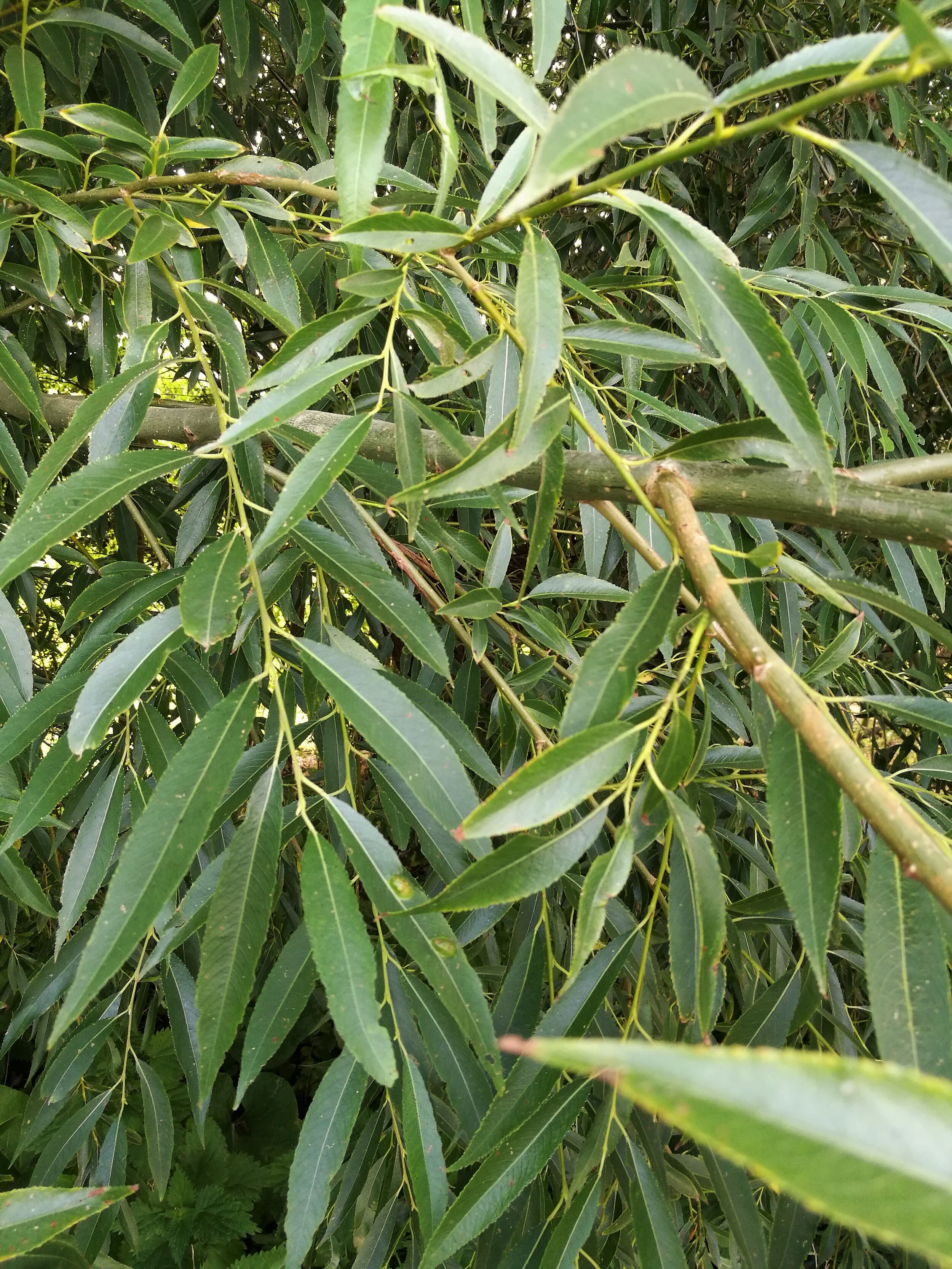White Willow (Salix alba)
Willow is one of my favourite trees. Fast growing, massive, beautiful. For me, long, trailing willow branches blowing in the wind is a sight and sound of summer. These grow everywhere at the margins of marshes and lakes at home, being water-loving giants. They make excellent climbing trees. It’s a shame they are so short-lived, being a softwood prone to breaking when they get overlarge. There were individual specimens at the RBG (Royal Botanical Gardens) where I used to work that received a lot of comment from visitors, who surmised they must be hundreds of years old, and who were surprised to find they they were younger than fifty. This is a tree of many important uses: its perfect for basket-making, and has been a medicinal tree since pre-history.
What it looks like
White Willow can be very broad as well as growing up to 25m tall. It has an irregular profile, with the central trunk often hidden by its drooping boughs and thick tresses of leaves. The bark is yellow-green or grey-green when young, turning silvery pale brown when mature, and deeply cracked and fissured. White willow produces yellow flowers from early spring that put out a huge amount of pollen. Leaves are long, narrow and spear-like, with very fine hairs on the upper surface and more densely fuzzed on the underside. They are silvery green, and paler underneath. Ripened seed pods erupt with a white wooly substance that carries the seeds away on the wind.
Uses
The long and supple branches, especially when young, make for excellent weaving material and are traditionally used for this purpose. Willow is a traditional source of Salicin (ASA, or Aspirin) and the inner bark, which has the highest concentration of the painkiller, has been traditionally chewed or boiled into a tea to extract it. It is still used in this way by many who prefer natural remedies to over-the-counter medication. However, care must be taken, as ASA is not generally safe for children. It has blood-thinning capability as well. As with any plant used medicinally, it is best to consult with your doctor before using it, especially if you may be sensitive to its effects or are taking medication that should not be combined with aspirin. It is every person’s individual responsibility to make safe choices in their own foraging and consumption.

